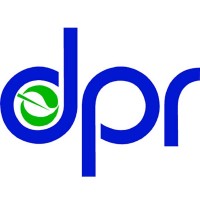Information on Endosulfan
Find information on the registration status, continuous evaluation and mitigation measures in California to regulate this active ingredient. An active ingredient is the chemical that makes a pesticide work on a target pest.
Active Ingredient: Endosulfan
Type of Pesticide: Insecticide
California Registration: No
EPA Registration: No
Fumigant: No
California Restricted Material: Yes
Toxic Air Contaminant (TAC): Yes
Volatile Organic Compound (VOC): No
Potential Groundwater Contaminant: No
Reevaluation Status: None
Chemical Class: Organochlorine
DPR Chemical Code: 259
Risk Evaluation and Mitigation Documents
Historic Documents
- 2009 – An Assessment of the Developmental, Reproductive, and Neurotoxicity of Endosulfan
- August 2008 – Director's Proposed Decision
- August 2008 – Volume I: Health Risk Assessment
- August 2008 – Scientific Review Panel's Findings
- June 2008 – Office of Environmental Health Hazard Assessment's Findings
- May 2008 – Executive Summary
- May 2008 – Volume II: Exposure Assessment
- May 2008 – Volume III: Environmental Fate
- January 2008 – Request for Worker Health and Safety Study on Residue Transfer from Insecticidal Cattle Ear Tags
- January 2008 – Health-Protective Estimates of Seasonal and Annual Reentry Exposure to Endosulfan: Typical Reentry Days
- September 2002 – Endosulfan Reregistration Eligibility Decision, Mitigation Measures Proposed for Occupational Exposure
- September 2002 – Endosulfan Exposure Estimates in Draft Exposure Assessment Document (11-2-2001) and Reregistration Eligibility Decision
- May 1998 – Report for the Air Monitoring of Endosulfan In Fresno County (Ambient) and in San Joaquin County (Application) (Appendices )
- February 1988 – A General Survey of Foliar Pesticide Residues and Air Concentration Levels Following Various Greenhouse Applications
- November 1987 – A Study to Establish Degradation Profiles for Six Pesticides (Triforine, Endosulfan, Chlorothalonil, Sulfotep, Dodemorph Acetate, and Daminozide) Used on Ornamental Foliage in San Diego County California During Fall 1986
- December 1985 – Monterey County Residential Air Monitoring
- May 1985 – A Degradation Study of Dislodgeable Endosulfan (Thiodan) Residues on Row Crops in Fresno and San Luis Obispo Counties During June 1984
- March 1985 – Degradation of Dislodgeable Foliar Residues of Endosulfan on Chinese Cabbage
- March 1977 – Decay of Endosulfan (Thiodan) Residue on Leaves of Strawberry Plants in Monterey County, California
- July 1976 – A Study of the Decay Rates of Ethyl-methyl Parathion and Endosulfan Applied as a Foliar Spray to a Tomato Field in the Sacramento Valley of California
- June 1976 – Endosulfan Residue on the Outer Leaves of Head Lettuce in Imperial County, California
